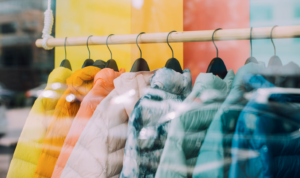 It’s been established that an omnichannel presence is an imperative for retailers. By definition, “omnichannel” means providing a seamless shopping experience across all channels, including in-store, online, mobile, and social media. In other words, your customer should be able to purchase your product or service from any channel they choose, and receive the same high level of service no matter how they choose to shop. Thus, establishing a presence on every channel is essential and in order to succeed in today’s competitive luxury retail market, retailers must have a well-executed omnichannel marketing and customer experience strategy. But, the interaction between channels can be even more essential to ensure a seamless customer experience.
It’s been established that an omnichannel presence is an imperative for retailers. By definition, “omnichannel” means providing a seamless shopping experience across all channels, including in-store, online, mobile, and social media. In other words, your customer should be able to purchase your product or service from any channel they choose, and receive the same high level of service no matter how they choose to shop. Thus, establishing a presence on every channel is essential and in order to succeed in today’s competitive luxury retail market, retailers must have a well-executed omnichannel marketing and customer experience strategy. But, the interaction between channels can be even more essential to ensure a seamless customer experience.
McKinsey recently pointed out a trend where customers are moving more across channels, even if they may ultimately have one point where they prefer to complete their transaction. Their research found that more than half of B2C customers engage with three to five channels every time they make a purchase. In certain verticals, like travel, there were up to six channel switches. Consistency between channels is key to an experience where these customers will ultimately convert. And when they convert, they convert big – this same research found that omnichannel shoppers shop 1.7x more than single-channel shoppers, and also spend more.
Here are four essential elements of an omnichannel customer experience strategy for luxury retailers:
- A Seamless Shopping Experience Across All Channels: As mentioned above, one of the most important aspects of an omnichannel strategy is providing a seamless shopping experience across all channels. This means that whether your customer is shopping in-store, online, or on their mobile device, they should be able to easily find what they’re looking for and have a consistent experience.
- Personalized Customer Service: Another important element of an omnichannel strategy is providing personalized customer service at every touchpoint. This includes things like ensuring that sales associates are knowledgeable about the product and can provide expert advice when needed – ideally, they’ll have all the information they need about the product (as well as size and color variants in stock at warehouses and other stores) instantly available to them. It also means offering features like wishlists and saved items so that customers can pick up where they left off on their last visit, regardless of which channel they were using.
- Consistent Branding Across All Channels: It’s important to remember that your brand is more than just your logo or your color scheme—it’s the entire experience that you provide to your customers. As such, it’s important to maintain a consistent branding across all channels. This means using the same logo, color scheme, tone of voice, etc., regardless of whether customers are interacting with your brand online, in-store, or through social media. It also means consistency throughout your signage, product lines and offerings.
- A Comprehensive Understanding of Your Customers: Finally, it’s important to have a comprehensive understanding of who your customers are and what they want in order to provide them with an exceptional omnichannel experience. This includes things like having detailed profiles of your ideal customer so that you can target them with relevant messaging and personalized offers. It also means using data and analytics to understand how customers are using your various channels and what their needs are.
Omnichannel marketing and customer experience are essential for luxury retailers who want to stay ahead of the competition. By focusing on delivering a seamless shopping experience across all channels, personalized customer service, consistent branding across all channels and a comprehensive understanding of your customers, retailers can exceed customer expectations – whether their customers are touching one channel or multiple channels – and achieve their omnichannel goals. We have worked with multiple clients in this space, including auction houses, to make these omnichannel experiences happen. And our current client XY Retail has made it their mission to facilitate the customer-facing and back-end functionality necessary to deliver on this promise with one integrated platform. Contact us to learn more about driving omnichannel digital transformation to consistently serve your customers.